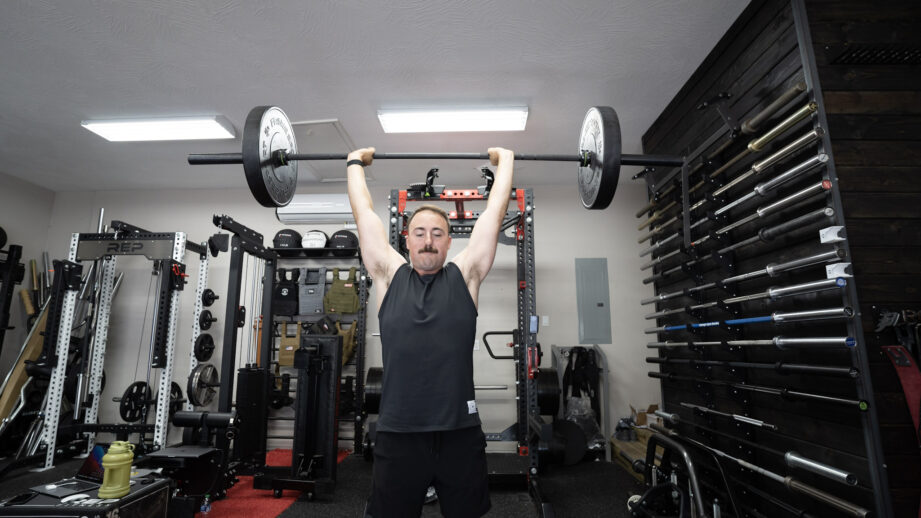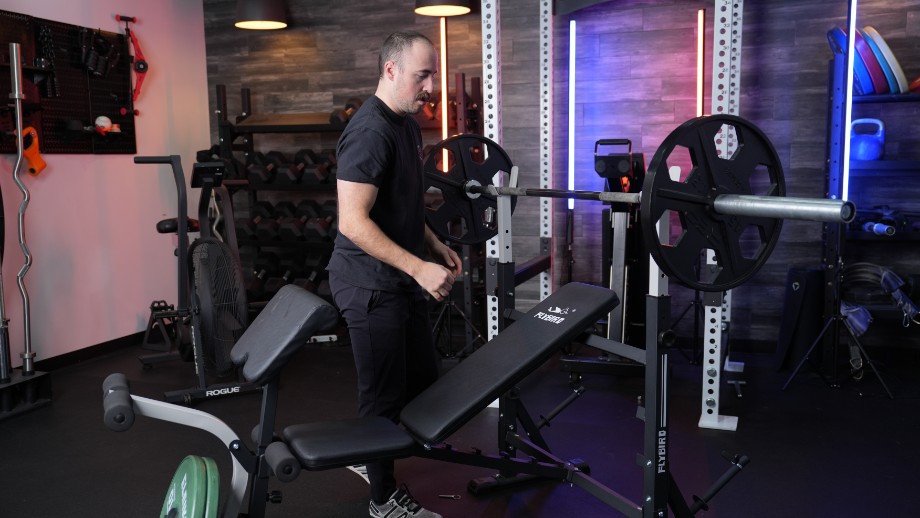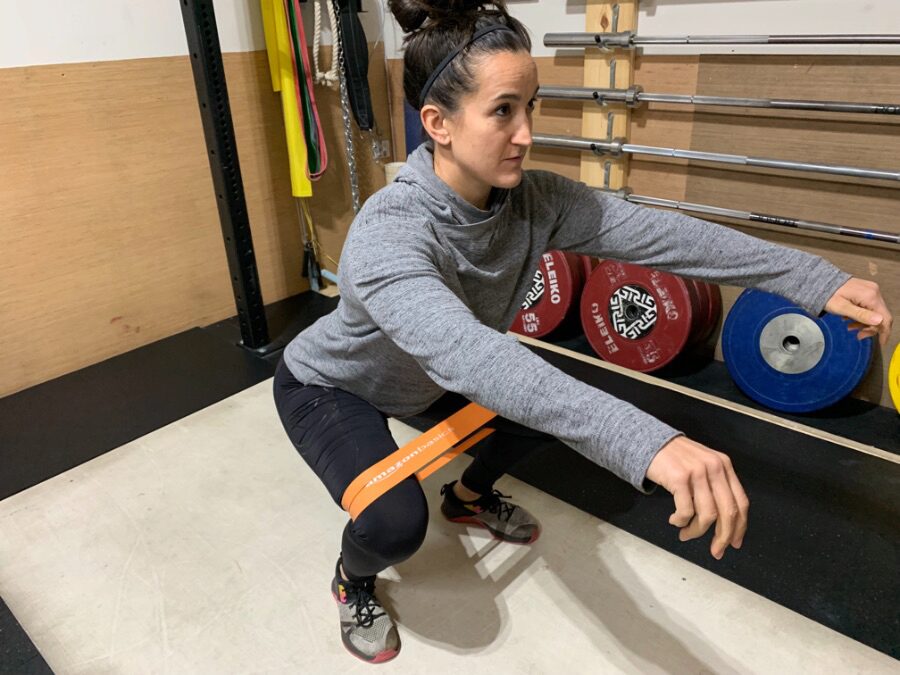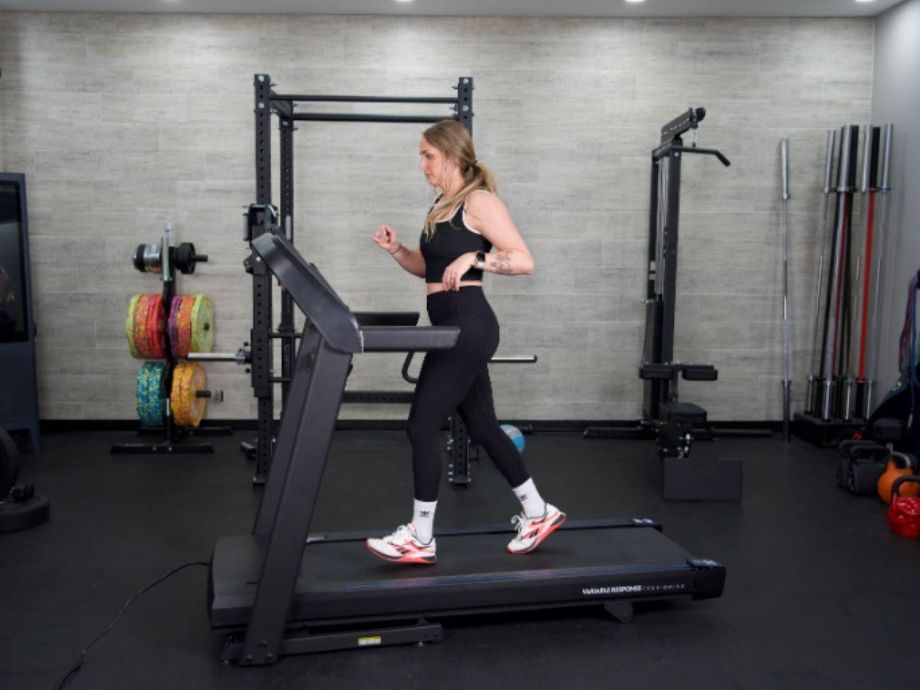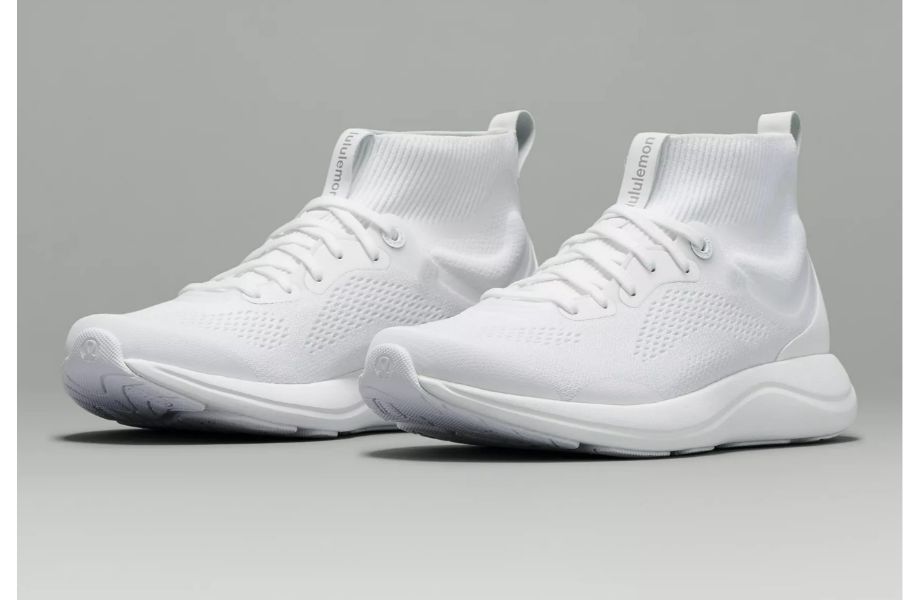You know you should do cardio and lift weights.
Wait.
You know you should lift weights and do cardio.
Wait.
You know you should do cardio while you lift weights?
Confusion.
Seriously, should you do cardio before or after weights?
Why You Should Do Cardio and Weight Training
Whatever your fitness goals, odds are the solution is some combination of resistance training and conditioning.
If you want to keep it superficial, you could look at it this way: Strength training builds the muscle that gives you a pleasing outline when you are wearing your one-size-too-small shirt, and cardio helps burn fat to give you definition for when you take the shirt off.
Way more importantly, both resistance training and conditioning are significant in general bodily health. Lifting weights increases bone density1 as well as muscle mass (two things we lose as we age). Strength training also serves as a natural way to promote positive hormone balance2 without the “supplements” (WINK).
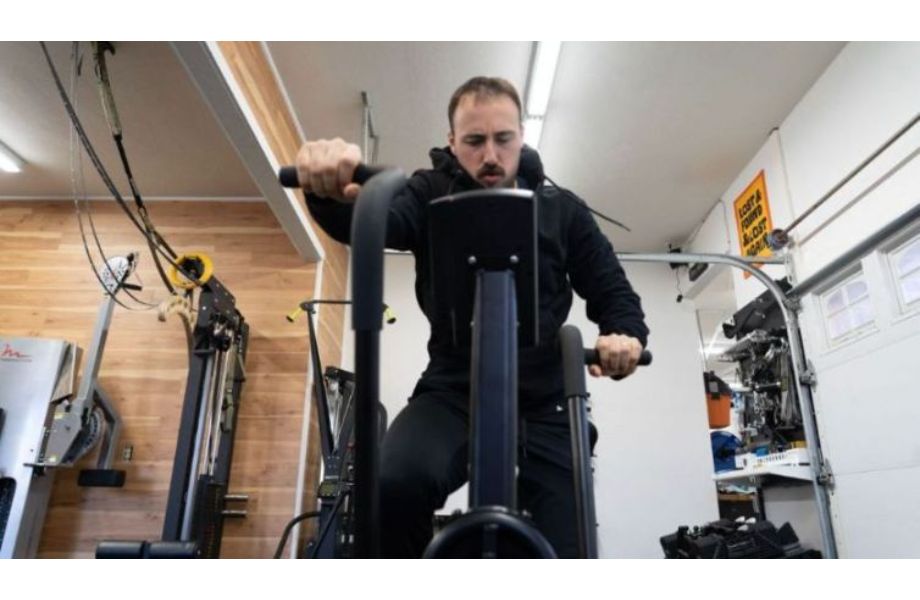
Cardio has significant benefits as well. The American Heart Association states 150 minutes of moderate-intensity aerobic3 activity promotes positive heart health. With heart disease still the number one cause of death in America, hitting the treadmill a few times for the amount of time a Friends rerun takes to play on TV isn’t a lot to ask.
Cardio: Before or After Lifting Weights?
So when should you do cardio? That truly depends on your goals. In most cases, we lift before we breathe hard. But, there are exceptions:
Goal: Lift Heavy
If you want to squat/clean/deadlift heavy weight, then everything you do before your top sets needs to be focused on one thing; priming your body for the work it needs to do. Possible uses of “cardio” as potentiation or pre-fatigue aside, tiring out your muscles (and your mind) before a big lift can increase your risk of injury.
Exhausting yourself before lifting weight4 will likely reduce your ability to produce force, and may or may not have a systemic effect on strength5 over the course of a training block.
That being said, you might just be out of shape. If you get out of breath after a 10-minute warm-up walking on a slight incline, it’s time to put down the triple McRib stack and get in better condition.
Goal: Run a Race
In this situation, cardio is the goal, so cardio should be the priority. Runners should absolutely cross-train, either separate from a run or potentially after one, depending on your time constraints. Generally, people with a road race in mind aren’t trying to also squat 500 pounds, so doing lighter resistance training after a run is perfectly acceptable.
Goal: Lose Weight
If weight loss is the goal, your body will actually burn more calories if you do your cardio workout after you hit the weights. This is due to the magic of post-exercise oxygen consumption. Basically, that wicked pump you got on the hack squat puts your body into a deficit it needs to recover from. This makes the body have to work harder at everything else it needs to do afterwards, which burns more calories.
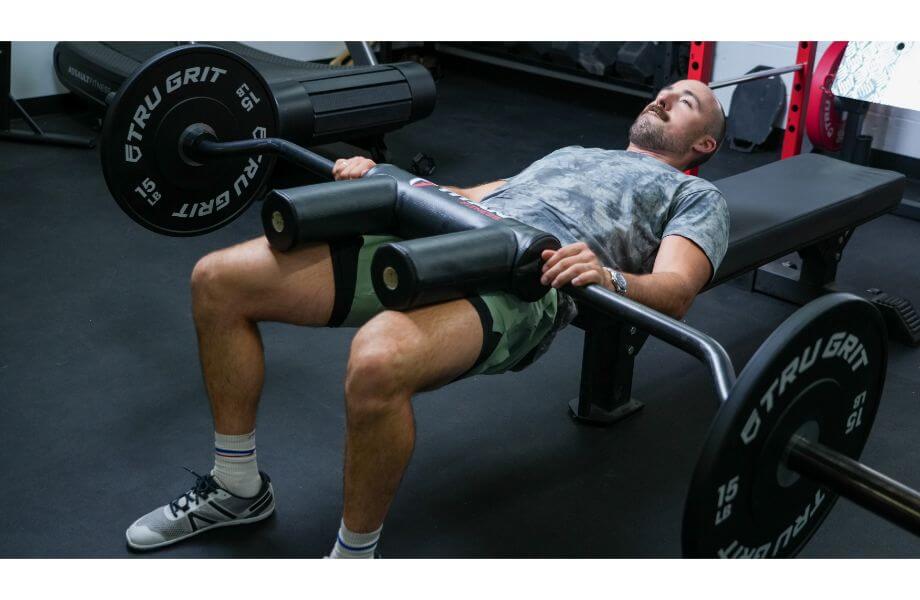
Goal: Do the Work
There is another branch of science relevant to our conversation; psychology. Let’s face it, it’s stupid easy to blow off cardio after a hard workout session of squats, good mornings, and deadlifts.
If you were really good at it, you might have warmed-up just a little bit longer than you had to, and rested between sets just a little bit more than you should have. Maybe you also walked to the water fountain way across the gym instead of the one right near your gym bag.
When you finished it was almost plausible that you didn’t have time to get your cardio exercise done. Well done.
Sticking cardio at the front of your workout may not be the most efficient way to burn calories, and it may mean you can’t lift as much weight, but if it means you will actually DO the cardio, it means more fat burning than not doing it at all. If you are intelligent with the type of exercise you choose, the extra blood flow may not even be a bad thing.
Pulling your shirt up to look at your abs in the mirror doesn’t count as blood flow.
Goal: Save Time
One more option is actually combining your cardio with your strength workout. Doing bodyweight/barbell/dumbbell/kettlebell circuits is both incredibly taxing on your cardiovascular system, and a great way to help build muscle in most trainees. You can even set up separate upper-body and lower-body circuits if you want to focus more on that.
Another way to combine weight training with some added cardiovascular exercise is to stick low-intensity to moderate-intensity cardio into the rest periods between sets of compound movements. Using the Ski-Erg in between sets of bench press feels great, as does jumping rope or doing kettlebell swings in between squatting or other lower-body movements. As long as you have a logical lifting program, and you lower your weights accordingly to account for the accumulated fatigue, this is an incredibly time-effective option.
Benefits of Cardio Before Weights
Maybe you want to get the “boring” part of your workout out of the way first. Perhaps you’d prefer to get your blood pumping before you pump some iron. Either way, here are some reasons you should consider cardio before weight training.
May Improve Blood Circulation
Whether you walk on a treadmill, stride it out on an elliptical, or pedal away on an exercise bike, performing cardio prior to weightlifting will get your heart rate up and increase blood flow to your muscles. Even a 10-minute session at a low to moderate intensity can make a major difference in preparing your brain and body for what’s ahead.
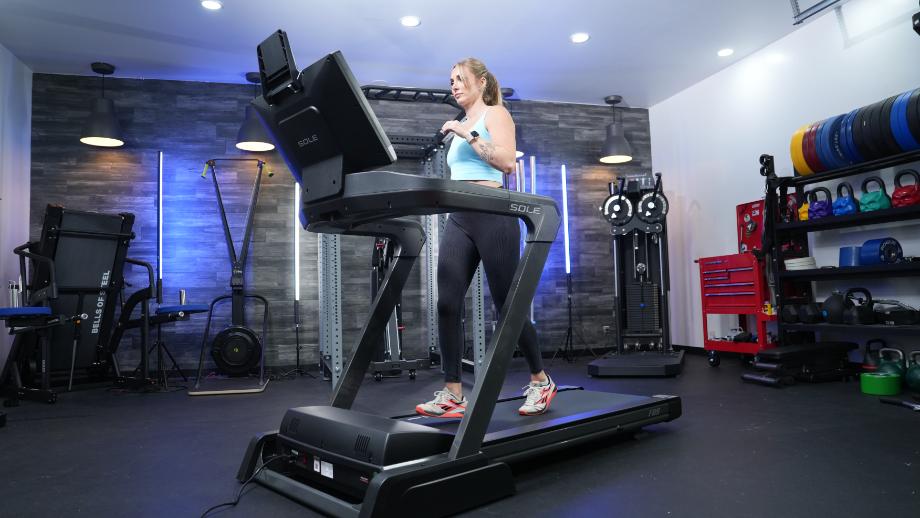
May Help Enhance Mental Focus
A successful strength training session requires intensity and purpose. What better way to get your mind right than to put on your favorite playlist and knock out a brief cardio workout? Honing that mind-muscle connection before you hit the weights can help you maintain the focus required to crush your lifts.
Can Increase Endurance
Getting your cardio in first is a sound strategy if you’re focused on increasing your endurance. While this means you’ll tap into your glycogen stores before you lift, it’ll provide a solid challenge for your cardiovascular system, testing your ability to recover and sustain success throughout the rest of the workout.
Benefits of Weights Before Cardio
Rather save cardio for the end of your training session? Let’s explore the benefits of postponing the cardio portion of your workout until you’ve re-racked your weights for the last time.
Prioritizes Strength Development
Your strength and power output will be at their highest when your muscles are fresh. By hitting the weights before you do some cardio, you should have ample energy to not only lift heavier but also for more repetitions. According to a 2003 study6 in the Journal of Strength and Conditioning Research, the volume of work that can be performed is diminished for up to eight hours when aerobic training precedes strength training.
Optimizes Hormonal Responses
Heavy resistance training triggers the release of anabolic hormones7 like testosterone and human growth hormone. If you’re focused on hypertrophy, it makes sense to lift weights first so you can sustain these elevated hormone levels, which can help support muscle growth and recovery.
Better Glycogen Utilization
Your body stores carbohydrates within your muscles and liver in the form of glycogen. This energy source is essential for anaerobic exercise like resistance training. Rather than depleting your tank by doing cardio first, give yourself the best opportunity to crush your lifts by starting your workout with as much fuel as possible.
Removes Pre-Fatigue Factor
Even if you take it easy during your cardio session, there’s no doubt your muscles will be at less than 100% by the time you hit the weights. That fatigue factor can prevent you from getting the most out of your resistance training, as you may run into the proverbial “brick wall” before you finish your set.
Benefits of Combining Cardio and Weight Lifting
If you’re still on the fence about doing cardio before or after weight training, there’s another possibility: combining the two. Here’s why cross training may be the ideal solution:
- Balanced approach to fitness: Incorporating both exercise modalities into a single training program can provide a balanced approach to your fitness routine that doesn’t necessarily prioritize one over the other.
- Keeps your workouts interesting: Combining cardio and strength training can prevent your workouts from getting stale. You can incorporate different exercises, experiment with high-intensity interval training (HIIT), and challenge yourself with new variations so you don’t lose motivation.
- Can help with body composition: Blending the best of both worlds can help you build your ideal physique. Combining resistance training with a well-formulated diet that’s high in protein can assist with your muscle-building efforts. Meanwhile, throwing in cardio will allow you to burn more calories and achieve a leaner look.
RELATED: Cross Training For Runners
Which Type of Cardio Is Right for Your Strength Training?
If you puke in the squat rack, you probably shouldn’t also puke on the track. If you want to pass out in the grass, maybe don’t pass out deadlifting heavy weights.
Do you get what I’m saying? Layering intensities is important to avoid injury and burnout; not every part of every workout needs to be the most intense thing you’ve ever done.
High-intensity activities like lifting heavy weights exact a heavy toll on the body’s system. Repeat bouts of explosive movements tap into the body’s glycogen reserves. Alternatively, moderate-intensity cardio doesn’t hit this energy source as the body stays in the aerobic zone (long story made short bro science: aerobic = with oxygen, anaerobic = without oxygen).
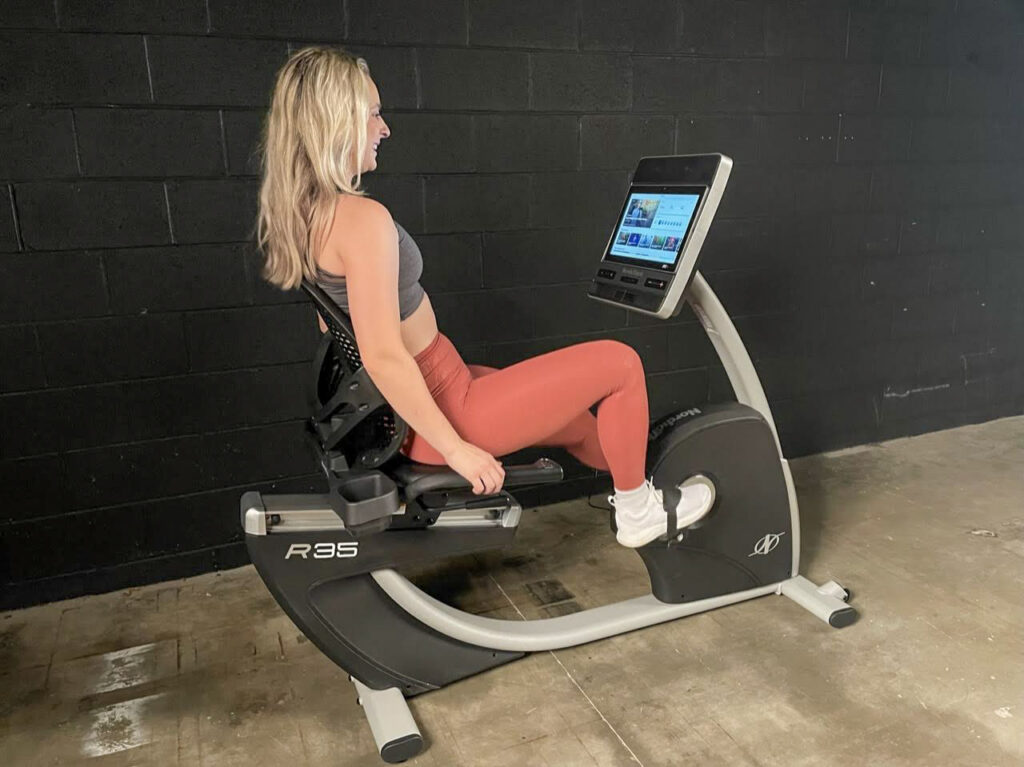
Therefore, if you are really focused on strength training, then lower-intensity cardio (like a brisk walk or steady-state row) would be ideal.
However, if you are short on time and have other goals, then HIIT may be a more time-efficient tool for fat loss8 than steady-state cardio, partly because it can mimic some of the same kinds of anaerobic effects as resistance training. Many warm-up protocols leverage this similarity and resemble truncated versions of full-body HIIT workouts.
Therefore, you could prioritize lifting weights and then hit a short, high-intensity workout afterward to reap some of the cardio benefits.
Much like a Nirvana song, you need to pick when to go hard and when to mellow out. You probably don’t see too many bodybuilders doing burpees, nor do you see many marathon runners doing max effort farmer’s carries. Somewhere in the middle, CrossFitters are happy doing a little bit of everything.
Building a Cardio and Weight Lifting Routine
You’re eager to build muscle and improve your cardiovascular fitness. But where do you begin? Let’s explore the keys to building an effective cardio and weightlifting routine.
Set Your Goals
Do you want to build the most muscle possible? Are you concerned with developing maximum strength? Or do you want to achieve a certain level of leanness via cardio and strength training?
Define your goals so you can start formulating an action plan.
Plan Your Workout Schedule
Once you know what you want to achieve, now you need to figure out how and when you’re going to make that happen. Do you have a busy schedule that only allows for efficient, HIIT-style workouts? Or do you have the time for longer-duration sessions?
Figure out how many days you can train per week so you can structure your workouts accordingly.
RELATED: Workout Schedule for Beginners
Assess Your Equipment Needs
Do you already have a home gym setup? If so, you may not need much else to get started. However, if you don’t have any equipment, you may need to sign up for a gym membership so you have access to all the tools you need to succeed.
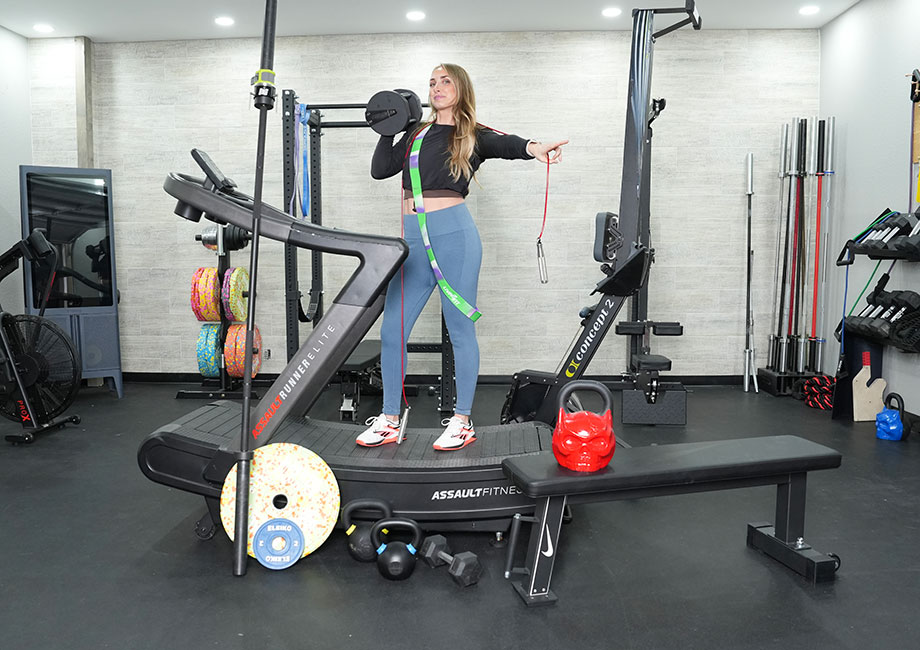
Incorporate Periodization
Cycling through different phases of training (endurance, hypertrophy, strength, and power) can help you avoid plateaus. This means you’ll need to change the intensity, volume, and other variables to continually challenge your body.
RELATED: What Is Progressive Overload?
Prioritize Recovery
You’ll get the best results if you give your muscles time to recover. From foam rolling to hydration to stretching, make sure you prioritize active recovery and rest days in your cardio and weightlifting routine.
Track Your Progress
Whether you go the paper-and-pen route or you keep a workout log on your phone, tracking your progress will give you a clear idea of the effectiveness of your training program. Take note of any substantial changes in your strength or fitness level.
RELATED: How To Use a Fitness Log
Make Adjustments
Once you’ve had a chance to analyze your results, don’t be afraid to switch things up. In fact, you should make adjustments to your program as time goes along. This could involve adding new exercises, changing up your rep and set schemes, or starting a new phase to work on a specific goal.
How Often Should You Train?
Low-intensity, steady-state work (think walking your dog or mowing a large lawn) can, and probably should, be done every day. You can use a treadmill or an elliptical if you don’t have a dog or a lawn. Articles on The 5 Best Ways to Get Shredded With Dog Walking will be all over the internet soon, so be a cool kid and get ahead of it.
Professional athletes can train three times a day all week. If training isn’t your entire life, and you have petty annoyances like a job, family, cats, and a healthy desire to enjoy your precious, limited existence on this earth, you can do what everyone else does and lift weights three to four times a week.
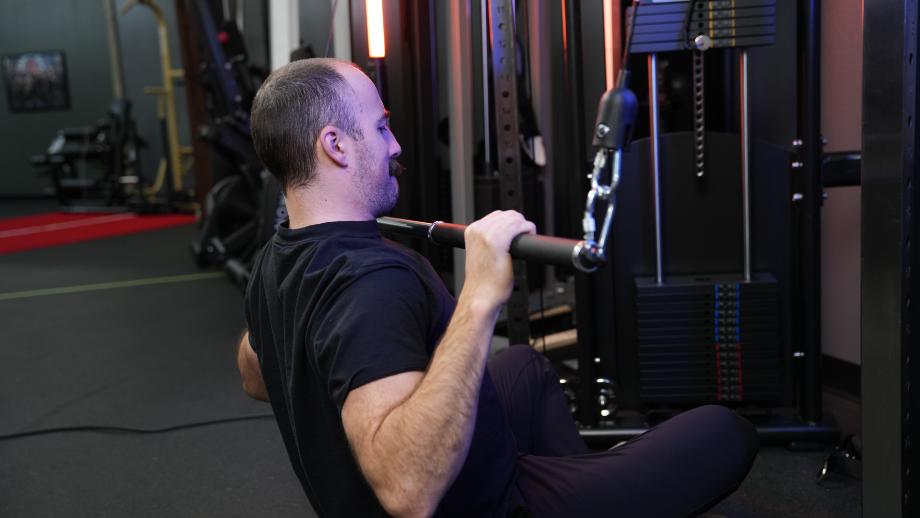
RELATED: How Much HIIT Should You Do?
The American Heart Association recommends 150 minutes of moderate-intensity or 75 minutes of high-intensity work each week. The organization also says you should do resistance training at least twice a week.
Stop going to the gym just to use the elliptical. Make it a habit to do some sort of resistance training every time you work out. You don’t have to have some crazy Enigma machine matrix to hit each muscle group X times a week and Y times a month. Just try to fit in some kind of squat, hinge, push, pull, and carry every week. If it was rocket science the dude who used to cheat off you in high school wouldn’t be bigger than you.
If that feels too overwhelming, consult a personal trainer for help setting up a lifting program.
RELATED: 10 Signs of Overtraining
Cardio Before or After Weights: FAQs
Is it better to do cardio before or after workout?
In a vacuum, personal trainers usually say cardio is better after lifting, but it depends on your goals and specific modalities. You almost never want to attempt a maximal lift in a severely fatigued state. If you postpone your conditioning workout until after you have lifted weights, you may fatigue faster (but this isn’t a bad thing!). Due to post-exercise oxygen consumption, lower intensity activities will burn a larger amount of calories for up to 48 hours after your heavy weight training session. Increased muscle mass also contributes to a greater number of calories being burned9 even while at rest. This creates more “free” opportunities for fat loss.
This isn’t at all to say that weight lifting doesn’t tax your cardiovascular system! If you’ve ever pushed reps on the front squat to 10, 15, or 20, you know your heart and lungs will feel like they are going to explode before your legs give out. Consider what function cardio plays in your fitness goals; are you using it as a calorie burning tool, an athletic development tool, or a heart health tool?
Also remember that a 10 minute warm-up isn’t cardio. Don’t be afraid to sweat and peel off a layer of clothing before getting to your serious lifting. Your gainz will thank you.
Should I do cardio before or after weights to gain muscle?
Who says you should be doing cardio at all if you want to gain muscle? Building muscle mass in a caloric surplus is insanely easier than trying to manipulate macros to build muscle and lose fat. If you are a beginner, you can get away with these types of “newbie gains,” but it’s not sustainable. What’s one way of making sure you stay in a caloric surplus? Lower the amount of physical activity.You can’t do everything all the time if you want to make significant changes to your body.
If you still feel like you absolutely need more aerobic exercise in your life, do it after you lift or on “off” days. Think of a cardio session as an opportunity to flush blood through your muscles, rather than a chance to make your lungs burn. Try to maintain, not improve. You are already asking your body to get bigger, don’t confuse it by telling it to get smaller.
If you gain muscle mass your body fat percentage will actually go down without losing any weight. Math!
Is it better to run before or after lifting?
Some people like to run to get warmed up, but if you are training full body lifts like the snatch or the bench press, there are probably better options. If your workout routine includes running long distance, it may be wise to do it after you lift, or even on a totally separate day.
If by “lifting weights” you mean twirling a body bar in a dance studio or doing light dumbbell complexes, there is nothing wrong with running beforehand.
References
- Hong, A., Kim, S. “Effects of Resistance Exercise on Bone Health.” Endocrinol Metab (Seoul). 2018 Dec; 33(4): 435–444. Published online 2018 Nov 30. doi: 10.3803/EnM.2018.33.4.435
- Timón Andrada R, Maynar Mariño M, Muñoz Marín D, Olcina Camacho GJ, Caballero MJ, Maynar Mariño JI. Variations in urine excretion of steroid hormones after an acute session and after a 4-week programme of strength training. Eur J Appl Physiol. 2007 Jan;99(1):65-71. doi: 10.1007/s00421-006-0319-1. Epub 2006 Oct 19. PMID: 17051372.
- American Heart Association, American Heart Association Recommendations for Physical Activity in Adults and Kids, April 2018, www.heart.org
- Ratamess, Nicholas A.; Kang, Jie; Porfido, Tara M.; Ismaili, Craig P.; Selamie, Soraya N.; Williams, Briana D.; Kuper, Jeremy D.; Bush, Jill A.; Faigenbaum, Avery D.. Acute Resistance Exercise Performance Is Negatively Impacted by Prior Aerobic Endurance Exercise. Journal of Strength and Conditioning Research: October 2016 – Volume 30 – Issue 10 – p 2667-2681 doi: 10.1519/JSC.0000000000001548
- Häkkinen K, Alen M, Kraemer WJ, Gorostiaga E, Izquierdo M, Rusko H, Mikkola J, Häkkinen A, Valkeinen H, Kaarakainen E, Romu S, Erola V, Ahtiainen J, Paavolainen L. Neuromuscular adaptations during concurrent strength and endurance training versus strength training. Eur J Appl Physiol. 2003 Mar;89(1):42-52. doi: 10.1007/s00421-002-0751-9. Epub 2002 Dec 14. PMID: 12627304.
- Sporer, B. C., & Wenger, H. A. (2003). Effects of aerobic exercise on strength performance following various periods of recovery. Journal of strength and conditioning research, 17(4), 638–644. https://doi.org/10.1519/1533-4287(2003)017<0638:eoaeos>2.0.co;2
- Craig, B. W., Brown, R., & Everhart, J. (1989). Effects of progressive resistance training on growth hormone and testosterone levels in young and elderly subjects. Mechanisms of ageing and development, 49(2), 159–169. https://doi.org/10.1016/0047-6374(89)90099-7
- Wewege M, van den Berg R, Ward RE, Keech A. The effects of high-intensity interval training vs. moderate-intensity continuous training on body composition in overweight and obese adults: a systematic review and meta-analysis. Obes Rev. 2017 Jun;18(6):635-646. doi: 10.1111/obr.12532. Epub 2017 Apr 11. PMID: 28401638.
- McPherron AC, Guo T, Bond ND, Gavrilova O. Increasing muscle mass to improve metabolism. Adipocyte. 2013 Apr 1;2(2):92-8. doi: 10.4161/adip.22500. PMID: 23805405; PMCID: PMC3661116.


